Human Orbital Spaceflights
![]()
International Flight No. 147STS-49Endeavour (1)47th Space Shuttle missionUSA |
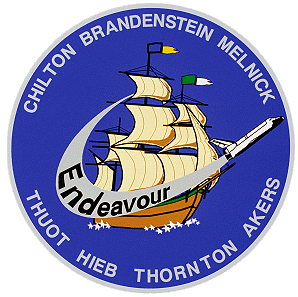 |
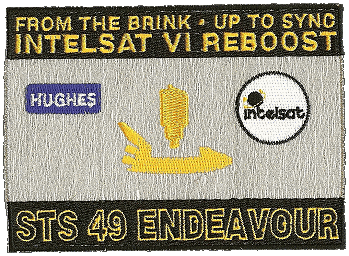 |
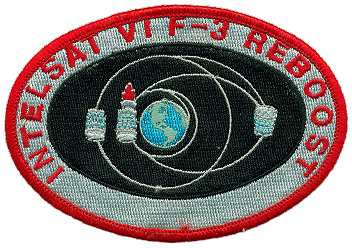 |
||
![]()
Launch, orbit and landing data
walkout photo |
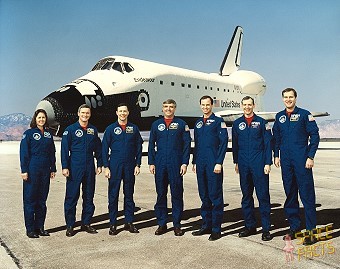 |
||||||||||||||||||||||||||||
alternative crew photo |
Crew
| No. | Surname | Given names | Position | Flight No. | Duration | Orbits | |
| 1 | Brandenstein | Daniel Charles | CDR | 4 | 8d 21h 17m 38s | 141 | |
| 2 | Chilton | Kevin Patrick "Chilly" | PLT | 1 | 8d 21h 17m 38s | 141 | |
| 3 | Hieb | Richard James | MS-1, EV-2 | 2 | 8d 21h 17m 38s | 141 | |
| 4 | Melnick | Bruce Edward "Mel" | MS-2, FE | 2 | 8d 21h 17m 38s | 141 | |
| 5 | Thuot | Pierre Joseph | MS-3, EV-1, RMS | 2 | 8d 21h 17m 38s | 141 | |
| 6 | Thornton | Kathryn Cordell Ryan | MS-4, EV-3 | 2 | 8d 21h 17m 38s | 141 | |
| 7 | Akers | Thomas Dale | MS-5, EV-4 | 2 | 8d 21h 17m 38s | 141 |
Crew seating arrangement
|
 |
|
||||||||||||||||||||||||||||||||
Hardware
| Orbiter : | OV-105 (1.) |
| SSME (1 / 2 / 3): | 2030 (7.) / 2015 (8.) / 2017 (6.) |
| SRB: | BI-050 / RSRM 22K |
| ET: | ET-43 (LWT-36) |
| OMS Pod: | Left Pod 03 (12.) / Right Pod 04 (8.) |
| FWD RCS Pod: | FRC 5 (1.) |
| RMS: | 303 (3.) |
| EMU: | EMU No. 2020 (PLSS No. 1006) / EMU No. 2015 (PLSS No. 1010) / EMU No. 2016 (PLSS No. 1015) / / EMU No. 2014 (PLSS No. 1008) |
Flight
|
Launch from Cape Canaveral (KSC) and
landing on the Edwards
AFB, Runway 22.
The launch was originally planned for May 04, 1992. To get better photos from the launching shuttle a new launch date two days later was set. Due to bad weather at the emergency landing places (Transoceanic Abort Landing) the countdown was stopped for 34 minutes. This was the maiden flight of the orbiter Endeavour. The primary goal of its nine-day mission was to retrieve the Intelsat VI satellite, which failed to leave low earth orbit two years before, attach it to a new upper stage, and relaunch it to its intended geosynchronous orbit. Intelsat-VI (F-3) weighed about 8,960 pounds (4,064 kg), had a diameter of 11.7 feet (3.57 meters) and a height of 17.5 feet (5.33 meters). With its solar arrays fully deployed, the satellite's height was almost 40 feet (12.19 meters). Each satellite's expected operational lifetime was 10 years. It was designed to provide a variety of voice, video and data communications with 48 transponders powered by 2,600 watts of direct current. Two nickel-hydrogen batteries could supply power for short periods when solar power was unavailable as the satellite passes through Earth's shadow. The perigee kick motor weighed 23,000 pounds (10,432 kg), was 127.22 inches (3.23 meters) tall and 92.52 inches (2.35 meters) in diameter. It was an Orbus 215 solid propellant motor built by United Technologies Corp. and provided by Hughes Aircraft Co., El Segundo, CA, for the mission. The capture bar assembly was designed by engineers in the Crew and Thermal Systems Division, Johnson Space Center, Houston. It weighed 162 pounds (73.5 kg), was 181.37 inches (4.61 meters) long, 40.75 inches (1.04 meter) tall and 37.38 inches (0.95 meter) wide. The capture bar had a detachable right beam extension, left beam extension and steering wheel. All of the capture bar equipment was constructed of aluminum and stainless steel. The cradle holds the perigee kick motor in Endeavour's cargo bay during launch and weighed 3,749 pounds (1,700 kg). It was constructed of aluminum and was 193 inches (4.90 meters) wide, 93.53 inches (2.38 meters) long and 151.48 inches (3.85 meters) tall. It was provided by Hughes Aircraft Co. The docking adapter allowed attachment of the perigee kick motor to the Intelsat-VI and weighed 152.8 pounds (69,3 kg). It was 92.52 inches (2.35 meters) in diameter and 12 inches (0.30 meter) thick, constructed of aluminum with some stainless steel components. Endeavour rendezvoused with Intelsat VI on flight day four of STS-49. Intelsat-VI was in an orbit of approximately 299 n.m. by 309 n.m. (554 by 572 km). Within 46 hours after Endeavour's launch, satellite controllers in Washington, DC. maneuvered Intelsat so that its orbit moved within a "control box" area within 6 degrees of arc of a 200 n.m. (370.4 km) by 210 n.m. (388.9 km), 28.35-degree inclination orbit. In addition, the controllers slowed the satellite's rotation from 10.5 to about 0.65 revolutions per minute. As Endeavour approaches Intelsat in the final phase of rendezvous, crew members Pierre Thuot and Richard Hieb began preparations for a spacewalk to capture the satellite, install a perigee kick motor and deploy the satellite. This was the schedule for the capture of Intelsat VI: As Endeavour closed in, Pierre Thuot should position himself on a foot restraint at the end of Endeavour's mechanical arm. From Endeavour's crew cabin, fellow crew member Bruce Melnick should maneuver the robot arm. As Endeavour holds a position in formation with the satellite, Bruce Melnick should move the arm and Pierre Hieb toward the slowly rotating Intelsat. Once within reach, Pierre Thuot should install a specially designed "capture bar" on the aft end of the satellite in a soft attached mode. After it is soft attached, the attachment should be rigidized by Pierre Thuot with the installation of a locking device using a specially built power tool. Pierre Thuot should then manually halt the satellite's rotation using a special "steering wheel" on the capture bar. Once the satellite is stabilized, Bruce Melnick should grapple the Intelsat with Endeavour's mechanical arm. But the first EVA performed by Pierre Thuot and Richard Hieb on May 10, 1992 (3h 43m) to capture the stranded Intelsat VI-F3-satellite failed. The "capture bar" on the aft end of the satellite could be inserted but did not hold the satellite. They entered Endeavour's airlock while Intelsat VI was still 13 km (8 mi) away. Pierre Thuot, who held a capture bar device equipped with an RMS grapple fixture, rode the end of the RMS, which was operated by Bruce Melnick. During orbital night Endeavour completed rendezvous and Pierre Thuot attempted to attach the capture bar to the 5.2-m-by-3.2-m (17-ft-by-12-ft) satellite. Differences between ground training and actual orbital tasks thwarted his efforts and Intelsat VI began to oscillate. Several times the RMS stopped moving because it was driven into positions its joints could not support. After three capture attempts Endeavour moved off to permit Intelsat controllers to damp its wobble. The EVA ended without any success. The second unscheduled EVA was again conducted by Pierre Thuot and Richard Hieb on May 11, 1992 (5h 30m) for the same work, but again failed. NASA again tried the original plan for capturing Intelsat VI, this time with greater care taken in positioning Pierre Thuot and less force on the capture bar. Endeavour again completed rendezvous in darkness, but Pierre Thuot waited until orbital sunrise to make another attempt. He tried five more times to attach the capture bar while Bruce Melnick operated the RMS and Richard Hieb stood by in the payload bay. Although his alignment was unquestionably correct, the bar refused to seat and the satellite began wobbling again. Endeavour backed away to allow Intelsat controllers to stabilize it. Pierre Thuot later remarked that handling Intelsat VI "was much more dynamic than our training had led us to believe." The third and again unscheduled EVA was performed by Thomas Akers, Pierre Thuot and Richard Hieb on May 13, 1992 (8h 29m). Daniel Brandenstein had maneuvered Endeavour within a few feet of the 4215 kg communications satellite. This time the astronauts were successful, when they captured Intelsat with their hands and not with the "capture bar". It was the first time in the history of manned spaceflight, that three astronauts performed an EVA at the same time. An Assembly of Station by EVA Methods (ASEM) structure was erected in the cargo bay by the crew to serve as a platform to aid in the hand capture and subsequent attachment of the capture bar. Pierre Thuot and Richard Hieb manually moved the satellite into a final position within the four clamps, close the latches and attached two electrical umbilicals from the motor to Intelsat. Next, they secured to the kick motor so that it will be jettisoned with the motor when the satellite reached the proper altitude. Once all of the connections were completed, the spacewalkers activated four springs that shall eventually eject Intelsat from the cargo bay. Pierre Thuot and Richard Hieb activated two timers for the solid rocket kick motor and moved to Endeavour's airlock to await Intelsat's ejection from the payload bay. After a switch was thrown from the aft flight deck of Endeavour, Intelsat VI was ejected by the springs at about 0.6 feet (18 centimeters) per second and with a slight rotation of about 0.7 revolutions per minute. After it had sufficiently cleared the orbiter, Endeavour slowly backed away. The fourth EVA by Thomas Akers and Kathryn Thornton occurred on May 14, 1992 (7h 45m) to test EVA tools and structures. The objective this EVA was to demonstrate and verify Space Station Freedom maintenance and assembly tasks. The Assembly of Station by Extravehicular Activity Methods (ASEM) evaluation consisted of hardware and techniques to construct a partial truss structure bay. The astronauts build a truss pyramid; unberth, maneuver and berth the Multiple Purpose Experiment Support Structure (MPESS) pallet to assess the mass handling capabilities of an EVA astronaut; and evaluate the ability to work with the mechanical arm at positions above and forward of the Shuttle's cargo bay. The MPESS, located in the forward payload bay, housed two node boxes for the truss pyramid; a releasable grapple fixture and interface plate; a truss leg dispenser and legs and strut dispenser; and the struts for the truss pyramid. Other tests evaluated the assembly area and MPESS berthing operations guided by the spacewalker and a spacesuit-mounted camera. Another of the ASEM drills were a demonstration of crew rescue device prototypes. Five concepts were tested by the spacewalkers - the astrorope, telescopic pole, bi-stem pole, inflatable pole and the crew propulsive device. The astrorope used an approach similar to the concept of a bola-type lasso. It was comprised of two cleats attached to a Kevlar cord. The astrorope was thrown by hand and is meant to wrap around an element of the space station structure. The astrorope must be manually retracted prior to throwing it again and has an effective reach range of about 20 feet (6.10 meters). The telescopic pole used a design similar to a telescoping radio antenna. It had a grapple fixture on the end and seven sections that can be manually extended. This concept would allow an unlimited number of grapple attempts and reaches up to 12 feet (3.66 meters). The bi-stem pole consisted of two thin strips of spring steel which, when allowed to return to their equilibrium state during deployment, overlap one another to form a rigid pole. It had a grapple fixture attached to one end and would be used with a power tool for extension and retraction. This powered approach design also is capable of unlimited grapple attempts. Its reach range was about 20 feet (6.10 meters). The inflatable pole used a tubular sock that when pressurized forms a rigid pole. It had a grapple fixture attached to the end and can accomplish unlimited grapple attempts. Once it is attached, the sock is deflated and a hand-over-hand reaproach can be performed. This design does not allow reuse and had a reach range of 15 feet (4.57 meters). The crew propulsive device was essentially a redesigned handheld maneuvering unit from the Skylab program. The device could be unfolded and small jets were used as thrusters, powered by a small canister of pressurized nitrogen. Using a powered reaproach, its reach range was limited by its nitrogen supply. During the ASEM flight experiment, astronauts assembled a truss structure segment using an advance truss joint. The truss joint was easily operated without the aid of tools and provided a strong and stiff connection between truss components. The truss joint, which only required the simple rotation of a collar to lock, was designed to be operated either manually by the astronauts or robotically if required in future applications. The joint which measured approximately 2 inches (5 centimeter) in diameter, had been tested extensively by the astronauts on the ground and in neutral buoyancy, and their evaluations had lead to improvements in the design. However, the ASEM flight experiment was the first time a truss structure has been assembled in space using this truss joint. The ASEM spacewalk, originally scheduled for two successive days, was cut to one day because of the lengthy Intelsat retrieval operation. In the past decade, exponential growth in the use of protein pharmaceuticals has resulted in the successful use of proteins in insulin, interferons, human growth hormone and tissue plasminogen activator. Pure protein crystals are facing an increase in demand by the pharmaceutical industry because such purity will facilitate Federal Drug Administration approval of new protein-based drugs. Pure, well-ordered protein crystals of uniform size are in demand by the pharmaceutical industry as special formulations for use in drug delivery. During the past 6 years, a variety of hardware configurations have been used to conduct Protein Crystal Growth (PCG) experiments aboard 12 Space Shuttle flights. These experiments have involved minute quantities of sample materials to be processed. On STS-49, the Protein Crystallization Facility (PCF), developed by the Center for Macromolecular Crystallography (CMC), a NASA Center for the Commercial Development of Space at the University of Alabama-Birmingham, used much larger quantities of materials to grow crystals in batches, using temperature as a means to initiate and control crystallization. The PCF has been reconfigured to include cylinders with the same height, but varying diameters to obtain different volumes (500, 200, 100, 20 ml). These cylinders allow for a relatively minimal temperature gradient and require less protein solution to produce quality crystals. This is an industry-driven change brought about by a need to reduce the cost and amount of protein sample needed to grow protein crystals in space, while at the same time increasing the quality and quantity of crystals. Also flying on STS-49 as part of the CPCG payload complement was a newly-designed, "state-of-the-art" Commercial Refrigerator Incubator Module (CRIM) which allowed for a pre-programmed temperature profile. The CRIM temperatures were programmed prior to launch and a feedback loop monitors CRIM temperatures during flight. Developed by Space Industries, Inc., Webster, Texas, for CMC, the CRIM also provided improved thermal capability and has a microprocessor that uses "fuzzy logic" (a branch of artificial intelligence) to control and monitor the CRIM's thermal environment. A thermoelectric device was used to electrically "pump" heat in or out of the CRIM. The PCF served as the growth chamber for significant quantities of protein crystals. Each of the PCF cylinders on STS-49 was encapsulated within individual aluminum containment tubes and supported by an aluminum structure. Prior to launch, the cylinders were filled with bovine insulin solution and mounted into a CRIM set at 40 degrees C. Each cylinder lid passed through the left wall of the aluminum structure and came into direct contact with a metal plate in the CRIM that is temperature-controlled by the thermoelectric device. Decreasing the temperature of the solution by 18 degrees C effected the resulting crystals' formation, which should be well ordered due to the reduced effects the Earth's gravity. Once activated, the payload was not required any further crew interaction (except for periodic monitoring), nor required any modifications for landing. The Air Force Maui Optical Site (AMOS) tests allowed ground- based electro-optical sensors located on Mt. Haleakala, Maui, Hawaii, to collect imagery and signature data of the orbiter during cooperative overflights. The scientific observations made of the orbiter, while performing reaction control system thruster firings, water dumps or payload bay light activation, and were used to support the calibration of the AMOS sensors and the validation of spacecraft contamination models. The AMOS tests had no payload unique flight hardware and only required that the orbiter be in predefined attitude operations and lighting conditions. An Ultraviolet Plume Instrument on the LACE satellite observed the Shuttle for calibration information. The mission was extended two days to complete the objectives. During construction, a drag chute was added to Endeavour to be deployed between main gear and nose gear touchdown to assist in stopping and add greater stability in the event of a flat tire or steering problem. The 40-foot (12.19 meters) diameter drag chute canopy will trail 87 feet behind the orbiter as it rolls out after landing. The main drag chute and a 9-foot diameter pilot chute are deployed by a mortar fired from a small compartment added to the bottom of the vertical stabilizer. The drag chute will be jettisoned when the spacecraft slows to less than 60 knots (111 km/h). STS-49 first used the drag chute during a Shuttle landing on the runway. |
EVA data
| Name | Start | End | Duration | Mission | Airlock | Suit | |
| EVA | Thuot, Pierre | 10.05.1992, 20:32 UTC | 11.05.1992, 00:15 UTC | 3h 43m | STS-49 | Endeavour | EMU No. 2020 |
| EVA | Hieb, Richard | 10.05.1992, 20:32 UTC | 11.05.1992, 00:15 UTC | 3h 43m | STS-49 | Endeavour | EMU No. 2015 |
| EVA | Thuot, Pierre | 11.05.1992, 21:01 UTC | 12.05.1992, 02:31 UTC | 5h 30m | STS-49 | Endeavour | EMU No. 2020 |
| EVA | Hieb, Richard | 11.05.1992, 21:01 UTC | 12.05.1992, 02:31 UTC | 5h 30m | STS-49 | Endeavour | EMU No. 2015 |
| EVA | Thuot, Pierre | 13.05.1992, 21:13 UTC | 14.05.1992, 05:42 UTC | 8h 29m | STS-49 | Endeavour | EMU No. 2020 |
| EVA | Hieb, Richard | 13.05.1992, 21:13 UTC | 14.05.1992, 05:42 UTC | 8h 29m | STS-49 | Endeavour | EMU No. 2015 |
| EVA | Akers, Thomas | 13.05.1992, 21:13 UTC | 14.05.1992, 05:42 UTC | 8h 29m | STS-49 | Endeavour | EMU No. 2014 |
| EVA | Thornton, Kathryn | 14.05.1992, 21:07 UTC | 15.05.1992, 04:52 UTC | 7h 45m | STS-49 | Endeavour | EMU No. 2016 |
| EVA | Akers, Thomas | 14.05.1992, 21:07 UTC | 14.05.1992, 04:52 UTC | 7h 45m | STS-49 | Endeavour | EMU No. 2014 |
Photos / Graphics
 |
 |
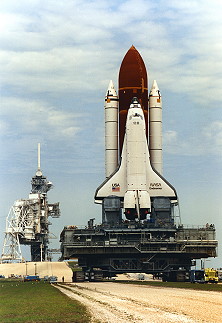 |
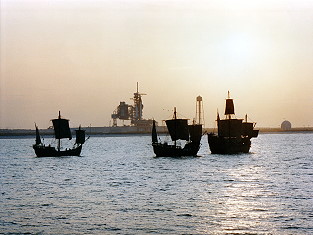 |
 |
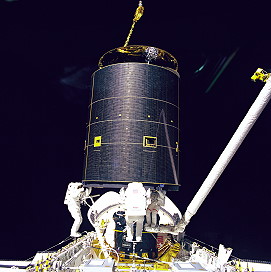 |
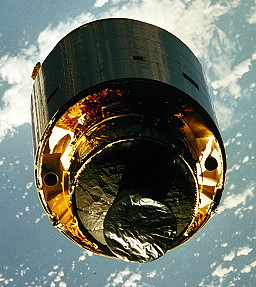 |
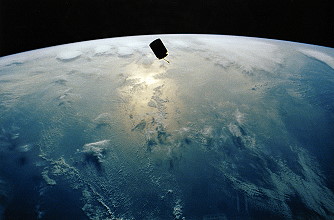 |
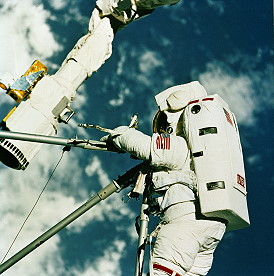 |
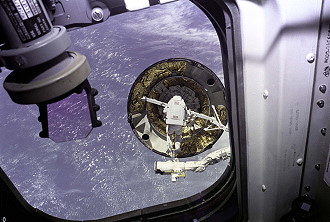 |
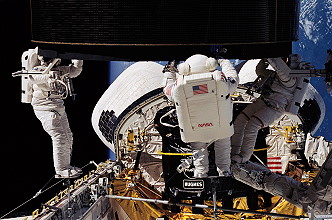 |
 |
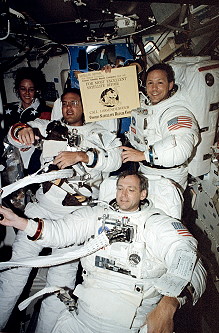 |
 |
 |
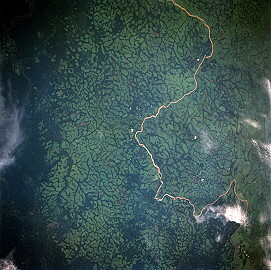 |
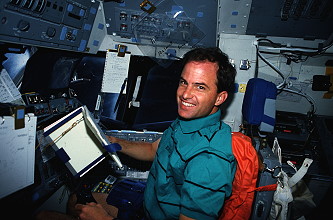 |
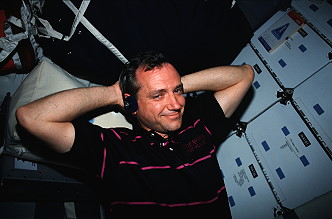 |
 |
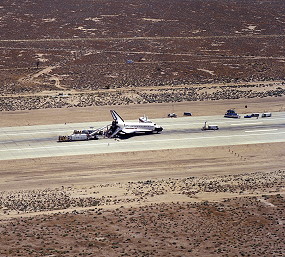 |
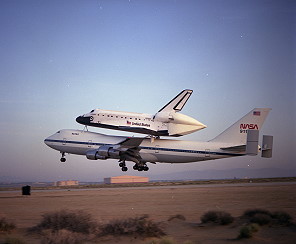 |
|
more EVA photos |
|
| © |  |
Last update on March 27, 2020.  |
 |